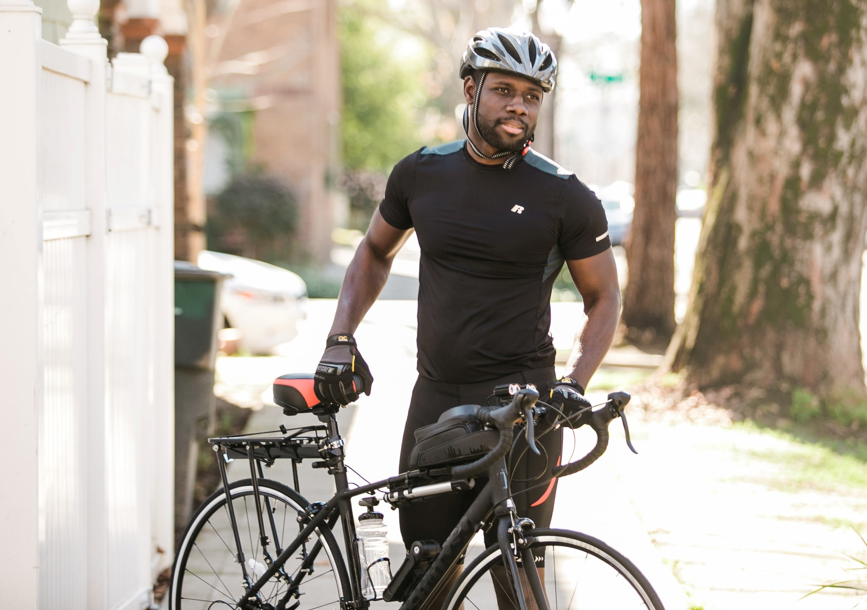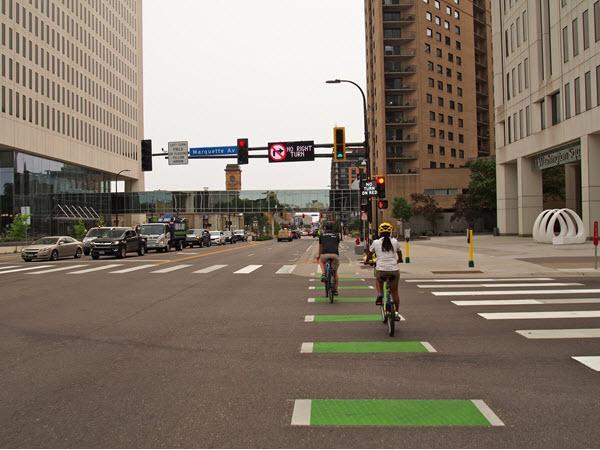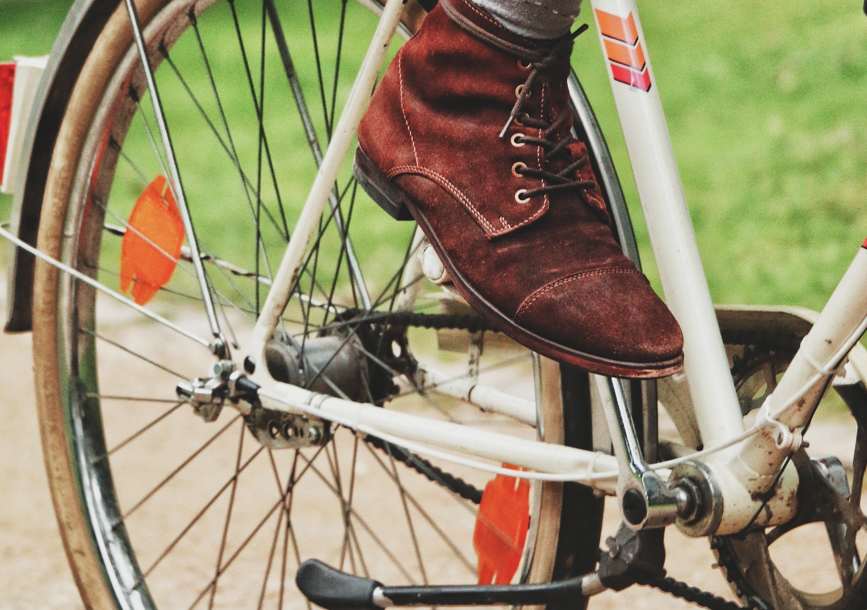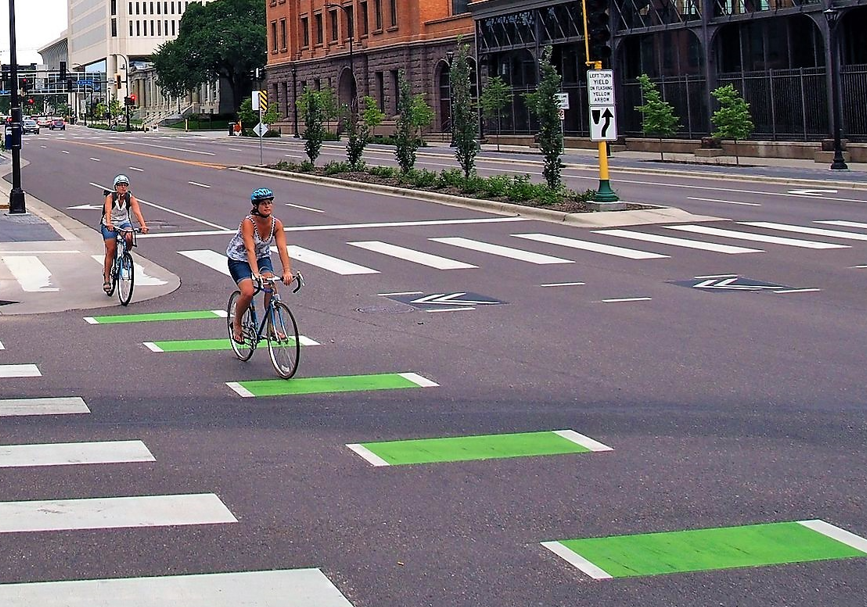Bicycle riding
Learn the bicycle riding laws and guidelines to ride safely.
Bicycle riding rules
Normal traffic laws and exceptions
Travel close to the right edge of the road
Bicyclists must travel as close as practicable—not as close as possible—to the right edge of the road.
Bicycles must keep right except when
- Overtaking or passing another vehicle moving in the same direction
- Preparing for a left turn
- Reasonably necessary to avoid:
- Vehicles
- Narrow lane widths
- Other hazards that make it unsafe to continue alone the right edge
- Riding in a bicycle lane
Two bikes can ride side by side
Bicyclists may ride alongside each other in a single travel lane. That is, if they do not impede normal and reasonable movement of traffic.
Signal turns and lane changes
Bicyclists must signal turns and lane changes unless both arms are needed to control the bicycle.
When it's okay to ride through a red light
A small number of traffic lights require the presence of a car to change to a green light.
Bicyclists may proceed through a red light they believe is not responding to them only if all the following criteria are met:
- The bicyclist has come to a complete stop
- The traffic signal stays red for an unreasonable amount of time
- The bicyclist believes the signal is malfunctioning or needs to be triggered by an automobile to turn green
- There is no cross traffic.
Sidewalk riding rules
When riding on sidewalks
Bicyclists on sidewalks must follow the rules
- Yield to pedestrians
- Give an audible signal when passing if necessary
- Approach intersections slowly and safely
Where you cannot ride on the sidewalk
You cannot ride a bicycle on the sidewalk in the following places
- Businesses districts in Minneapolis
- This includes areas of downtown and uptown
- The University of Minnesota campus
Bicycle lights and equipment rules
Understand bike lane markings
Know the road and the laws of the City's bike lanes.
Contact us
Public Works
Phone
Address
City Hall350 Fifth St. S., Room 203
Minneapolis, MN 55415
Office hours
Monday - Friday
8:00 a.m. - 4:30 p.m.





